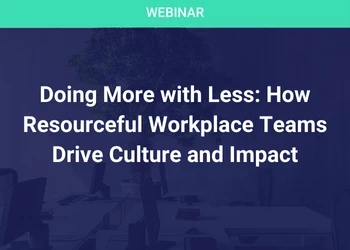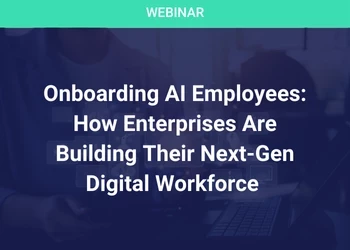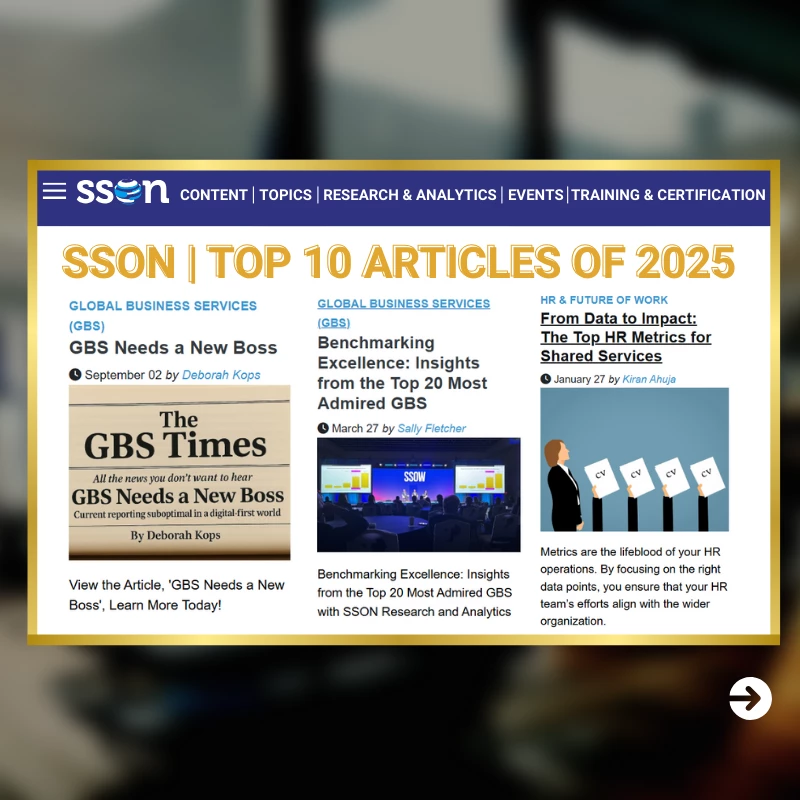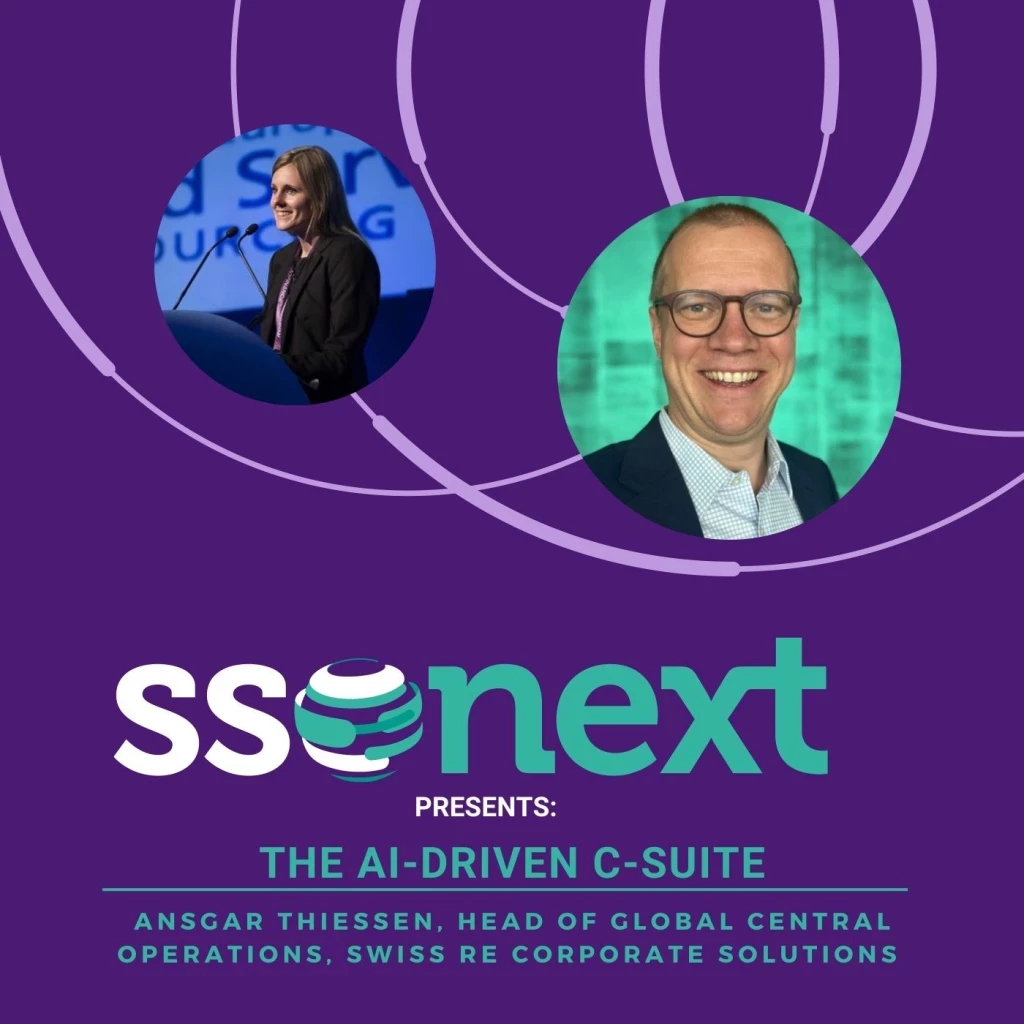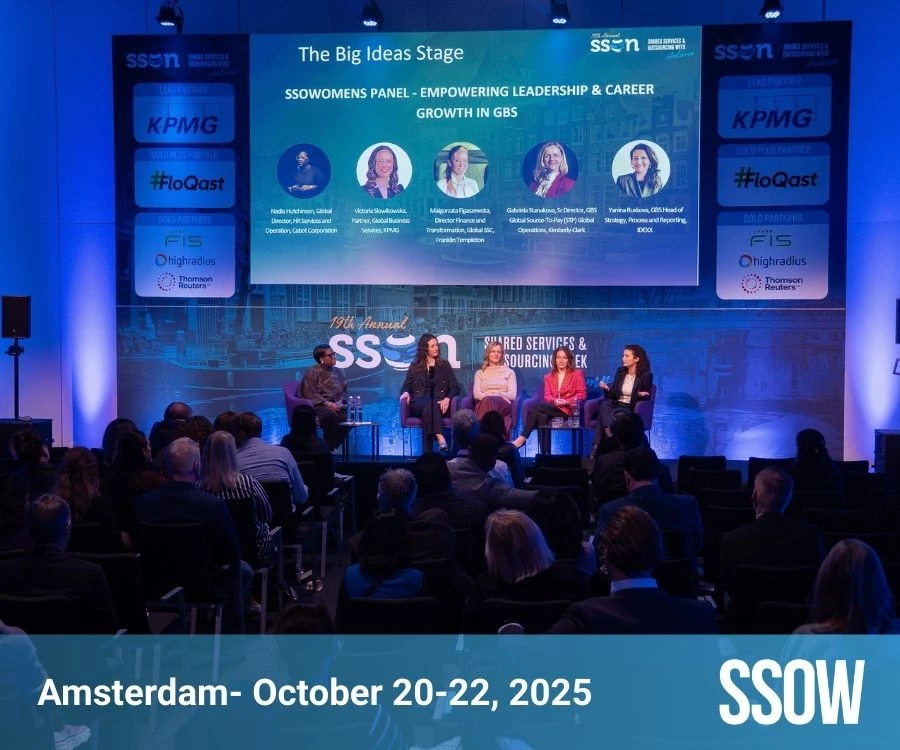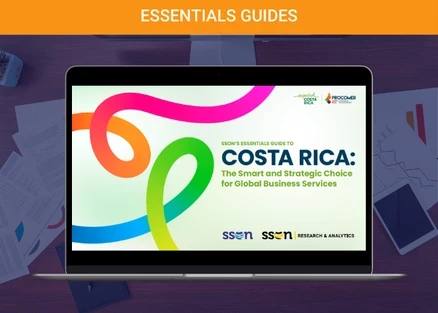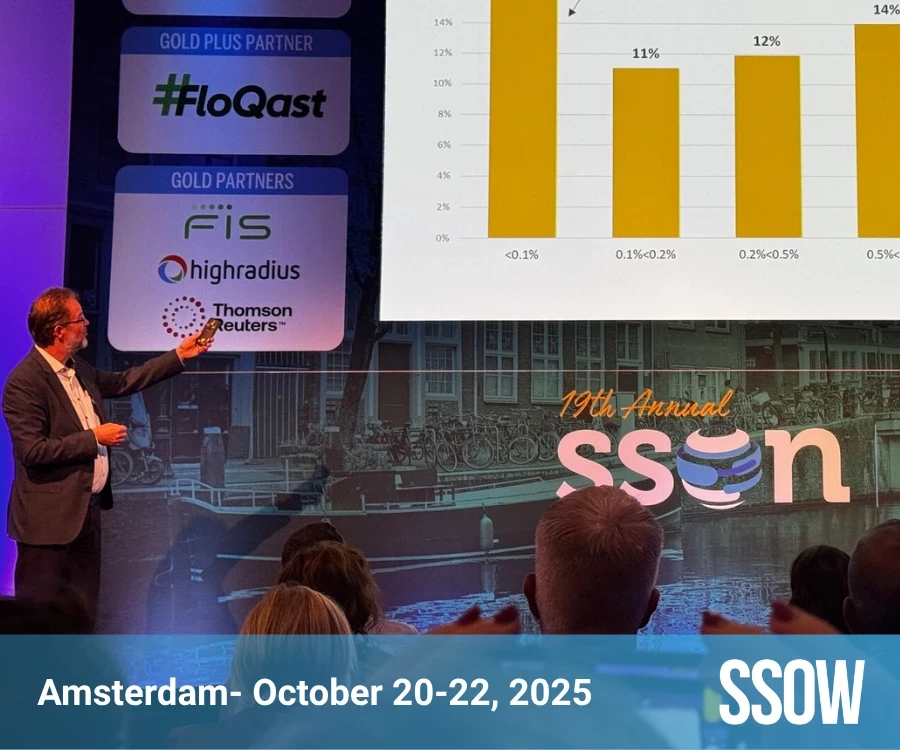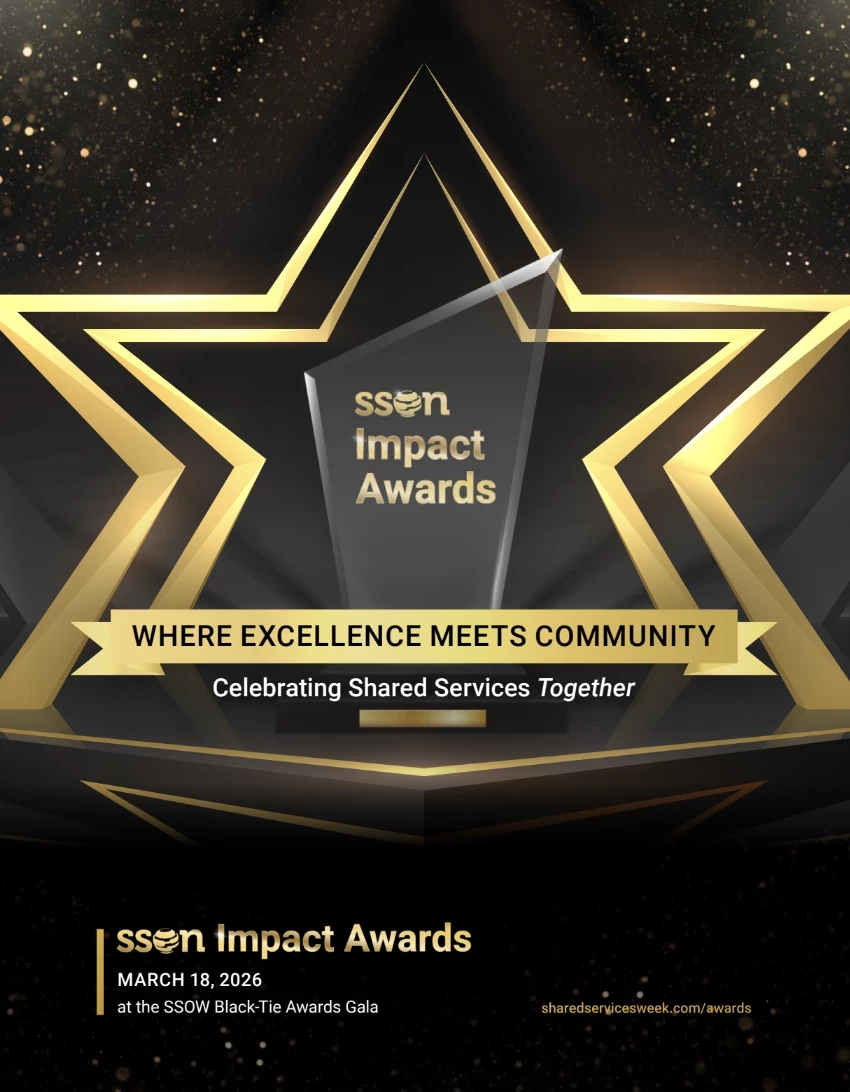The GBS Paradox: Single vs. Multi-Functional ‘Global’ Business Services
How to choose the right business services model
Add bookmark
The authors Bob Cecil and Jeff Goldstein both have decades of global business services transformation under their belts. In this article, they address one of the most commonly asked questions around choosing the 'right' business services model.
One of the most common questions we hear asked is:
“Which is best: Multi-functional Global Business Services (GBS) or single function shared services such as individually managed Finance or Human Resource shared services?"
We see a paradox in the marketplace regarding this question. Most of the business services research surveys and various pundits point to the multi-functional GBS model either having the highest growth rate or being an attribute of higher performing business services organizations. Indeed, SSON’s State of the Shared Services and Outsourcing Industry Global Market Report 2021 states that 62% of global respondents already operate as GBS, with another 19% planning to move to GBS within the next five years.
But, putting your ear to the ground among GBS leaders gives you a different feel. Many are clearly questioning whether their company will sustain a multi-functional GBS model and a few high-profile companies have already abandoned multi-functional GBS in favor of individually managed functional shared services.
How do we solve this paradox? Which model is best?
The real question, of course, is: Which is best for you?
GLOSSARY OF KEY TERMS
Business services: A collection of related work activities managed and offered as a service to deliver a business outcome to recipients and/or buyers of the service irrespective of any particular organizational model such as multi-functional global business services or single function shared services.
Functional shared services: An organizational model for providing business services bounded by a single function (e.g., Finance shared services, Human Resources shared services).
Global business services (GBS): An organizational model for providing multi-functional business services to the enterprise. Multiple variations of GBS exist along a spectrum of scope, delivery, and governance models.
Captive: A model where business services are managed and delivered by internal employees (contrasted with outsource).
1. How We Got Here
Functional shared services started as a trend during the late 1980s and picked up momentum over the next 10 to 15 years. The primary early focus was on delivering Finance transaction processes, generally in the U.S., but this progressively moved to other geographies and other general and administrative functions. The value proposition was to leverage the best of both worlds – i.e., centralization’s scale and efficiency and decentralization’s service and innovation orientations. These ‘functional shared services organizations’ (SSOs) were run like a business via commercial, service, and operations management. Outsourcing and offshoring supercharged the model in the 2000s.
If some is good, then more should be better. Multi-functional GBS became the ‘darling’ model of the last decade. It was defined by 1) enterprise-wide (e.g., global across all business units) and 2) multi-functional or function independent (e.g., business services).
Then we started to see some reversal of the multi-functional GBS model. Certain high-profile companies that had established multi-functional GBS models began to shift back to independently managed functional shared services.
Curiously, many of these multi-functional GBS models that shifted in whole or part back to functional shared services were generally recognized as high-performing GBS organizations.
The primary catalyst cited for the reversal was C-Suite executive leadership change – so, either a loss of the key executive sponsor for GBS or the appointment of a new executive. A cynic might assert that the model is chosen based on a power struggle at the top. A more muted response would be that the model is chosen based on difference of opinion and priorities among executives. But there are underlying, highly valid, business reasons for choosing the right model that you should consider, beyond personal motivations and opinions.
Warning Signs Your Business Service Model May Not Survive:
- A new executive gets appointed with a different agenda
- Your “burning platform” no longer shines so bright
- Your company is looking to streamline executive ranks including potentially GBS leadership
2. How to Choose the Right Model
Organization models should not be static. Rather, consider them more analogous to organic structures that mold and adapt to different environments and needs. For business services, the primary determining factor for the ‘right’ business model should be how they contribute value to the overall enterprise strategy.
Business services’ value contribution naturally evolves at various stages of the improvement journey, and the organizational model should evolve alongside. Below are some of the more typical stages of evolution. Companies can choose to skip stages, but typically constraints such as developing business services competency and credibility limit how quickly they progress.
Stage 1: Functional Shared Services
Virtually all very large, multinational, multi-business unit companies operate in some form of a matrixed model, with business units, functions and geographies sharing governance, responsibility and execution over back-office activity. The challenge in operationalizing this model traditionally focuses on whether, how, and where to aggregate like activity. To meet this challenge, about 90%* of U.S.-based large companies have chosen to operate some form of shared services. Most start with one or two single function shared services operating independently from one another.
The initial focus of functional shared services is on transactional processes offered ‘as a service’ to business units. The primary value proposition is about achieving cost efficiency while delivering the ‘right’ level of service within control guidelines; all while freeing up the business units to focus on their ‘core.’
Companies should select this model at the early stages of their business services evolution, when they have enough business diversity and scale in transaction processes to benefit from consolidation, standardization, and service management. It is particularly attractive to those who want to follow a ‘test and learn’ strategy for the implementation of shared services.
Stage 2: Aggregated Business Services
The most basic form of multi-functional GBS is simply putting a layer of leadership and management practices on top of individual functional shared services with delivery activities co-located in service centers. The primary value proposition of this aggregated GBS model is extending benefits of transactional functional shared services across more functions while lowering duplication of effort and shared infrastructure. Where the adoption of functional shared services requires business units to relinquish day-to-day execution of routine back-office activity, GBS requires a similar willingness for collaboration across C-suite functional leaders.
Companies choose the aggregated GBS model when they are seeking to raise the level of performance of transactional processing across many functions more quickly through collaboration and shared governance. They are seeking more comprehensive benefits while reducing duplication of effort in implementation and ongoing maintenance. The model is particularly attractive when some functions have lagged others in functional shared services adoption and companies are looking to raise the bar of performance uniformly across functions. Functional shared service enables economies of scale within a function, while aggregated GBS additionally delivers economies of scope across many functions.
Stage 3: Integrated Business Services
At this level of evolution, you organize processes on an end-to-end basis, eliminating inconsistencies and inefficiencies associated with functional silos. End-to-end process management often means that you extend your business services model to include non-transactional activities (e.g., Sourcing, for Source-to-Settle; Customer Service, for Order-to-Cash). While not all activities within an end-to-end process are typically delivered out of a single integrated business services organization, this organization takes a lead role in orchestrating the achievement of business outcomes across the process through global process management.
Technology plays a critical role here, with the end goal being ‘lights out’ processing, with minimal levels of labor required for day-to-day processing, while also enhancing user experience. Tools such as process mining and discovery, robotics, and artificial intelligence are critical enablers alongside traditional ERP and common off-the-shelf applications.
The value proposition of organizing business services for end-to-end processes into a common, integrated GBS organization extends beyond additional cost savings and service improvements to include business outcomes such as improved cash flow, customer loyalty, and employee retention. While the value proposition is large, it is also one of the more difficult models to sustain due to investments in cross-functional governance and process management. Therefore, companies select the integrated GBS model when they envision significant improvements in both efficiency and effectiveness from end-to-end process optimization and devote themselves to a culture of continuous process optimization.
Stage 4: Capability-Based Business Services
Once you have dramatically reduced the labor content of end-to-end processes through elimination or automation of work, the value proposition of business services shifts again. Maintaining a large organization for process delivery becomes less relevant. Instead, technology, augmented with specialized expertise, becomes the primary lever to achieving process efficiency and effectiveness.
While human-based operational processing thus becomes less relevant to the organizational model, cross-functional enterprise capabilities become more important – both to sustain and extend the benefits of end-to-end process improvement. Sample capabilities include:
-
- Data and Analytics
- Intelligent Automation
- Experience Management
- Process Management
- Continuous Improvement
- Transformation Management
These capabilities are highly interrelated, with benefits accrued from housing them in a common, capability-based business services organization. They can be offered ‘as-a-service’ both to functions and business units across a wide array of processes.
The value proposition of a business services organization dramatically shifts at this stage. It is no longer primarily accountable for efficient service delivery via large pools of labor in service delivery centers. Rather, the value proposition is about providing orchestration and expertise to others to improve and maintain process excellence. Therefore, companies select this model when they are seeking to orchestrate the continuous improvement of processes that are already highly automated and extend transformation related expertise to the broader enterprise.
Evolving Business Services Organization Models:

3. Enroll Stakeholders and Build Competence
While, clearly, understanding the value proposition of business services is critical, ultimate success is dictated by how well you enroll stakeholders in the vision and build your capabilities. In truth, the difficulty of building stakeholder commitment for business services and capabilities only increases as you progress through the various stages of business services evolution.
Functional shared service typically requires the least level of stakeholder engagement among the different business services organization models, albeit significant change management is still required particularly with geographic and business unit leaders. The value proposition is most easy for stakeholders to grasp, namely: cost, service, and risk improvement though consolidation and standardization of transactional processes into a low-cost delivery model. Functional leaders tend to be those championing the change, with most of their efforts oriented toward aligning business unit leaders to the vision and enrolling their own shared services employees in the cultural change. While capability building is important, the talent management pool and associated methods from both outsourced and internal captive shared services organizations is robust.
Aggregated business service requires incrementally more stakeholder engagement. While the value proposition is similarly concrete as in functional shared service, you now need to engage functional leaders themselves in sharing accountability with cross-functional GBS leadership. However, given the desire to make more holistic improvements across multiple functions it is also the model which garners higher-level executive sponsorship with the largest burning platform. Incremental capability building is mostly required in areas such as service management and business engagement.
The transition to the integrated business service model tends to be the one where the continuation of the multi-functional GBS (e.g., aggregated) versus single functional shared services is most frequently questioned. For example, a company will typically have already reduced direct transaction processing costs, which means the initial burning platform is often dimmed. End-to-end process improvement tends to introduce business outcome related benefits that, while understandable, are also less concrete to many stakeholders. It also requires greater investment in process management and cross-functional governance.
Hence, it may not be surprising to find that a company that has already achieved the benefits of aggregated business services often finds that the extra management and governance efforts of evolving the model is not warranted, particularly if they are not ready for end-to-end process execution. More simply put, they ask: “Can I maintain (or incrementally improve) what I have already achieved with less overhead and simpler accountability if I move back to a functional shared services model, now that the heavy lifting is done?”
”The challenge organizations are experiencing ... is that end-to-end cannot just be ‘implemented’ as a strategic initiative. In order to succeed, it requires two things: First, true process understanding; and secondly, a receptive ecosystem in the form of a ‘rebooted’ enterprise culture.”
Source: Why Cultural Transformation is Key for End-to-End Process Optimization, SSON 2020
Capability-based business service may require the greatest stakeholder enrollment and capability-building challenge of all the options. This model requires stakeholders to fundamentally rethink what business services is all about. Rather than centers of transactional scale, they are now centers of expertise that orchestrate process optimization across multiple organizations. Process delivery is ‘boundaryless’ and hence not confined to any one organizational unit, with the majority automated and augmented through-intelligent automation. This model places a heavy burden on attracting and retaining the best experts, most of whom are in high demand and short supply both inside and outside of the company.
4. The Impact of COVID-19
COVID-19 has accelerated business services organizations’ aspirations to transition away from their traditional models – transaction processing factories – to digitally-enabled centers of expertise for end-to-end process optimization. This would suggest an acceleration into Stage 3 and 4 business services models. But the jury is out as to how many companies will sustain this momentum with the right supporting organization model. Those who evolve their vision for business services, enroll stakeholders in their vision, and progressively align their capabilities with the vision, will thrive.
SSON’s 2020 report “Why Cultural Transformation is Key for End-to -End Process Optimization” sums it up well:
“Organizational structures have evolved over the lifetime of an enterprise, but often remain stuck in the initial framework in which they were created. These structures work, and support the objectives of the business, but remain largely rooted in the past.
With the digital age now well and truly upon us, and the pandemic of 2020 having accelerated the transition from old to new models, it’s time that organizations embrace the future, starting with their internal process frameworks.”
SSON’s State of the Shared Services and Outsourcing Industry Global Market Report 2021 points to a potential resurgence in a focus on end-to-end process optimization and enterprise capability services. This is exemplified in the Integrated and Capability-based business services models spurred by Future of Work (FOW) plans in response to COVID-19. Over a third of survey respondents point to deploying more automation to eliminate physical delivery networks, and 30% cited Data Analytics/Business Analytics as a top service priority for expansion.
However, there is a definite possibility that we will continue to see some recycling of models once the pressure of the pandemic resides and FOW plans potentially regress.
As stated in the Global Market Report:
“To the extent that FOW represents a key plank in shared services future delivery strategy, we are not yet seeing sufficient practical applications. Although unlikely, the question remains whether shared services may ‘slip backwards’ once offices are once again open for business.
Unless we see significant commitment to enabling technologies – and these would need to extend beyond workflow and communications tools to more intelligent platforms that manage end-to-end processing – the extraordinary opportunity presented by FOW will not be realized. In other words: truly virtual shared services models delivering measurable, sustainable resiliency will remain elusive.”
5. Lessons Learned from the Front Lines
Culture, politics, and budget priorities all influence the business services models chosen by companies, as well. As you contemplate the right model for your company, consider the following lessons gathered by Jeff Goldstein in his 30+ years of shared services and GBS leadership at EMC, Boston Scientific, Newell Brands, and Biogen.
- Early in the journey, spend the time engaging executive leadership in understanding the benefits, risks, and tradeoffs of various models over time. The initial feedback is a valuable input to choosing the right operating model at the beginning of the journey, while also keeping an eye on the longer-term model.
- Engage executive management in recognizing business services provides an on-going annuity (via continuous improvement) that contributes value to the organization in different ways (efficiency and effectiveness) and at different levels, over time; but it requires ongoing investment. Executives may lose interest (as they have “bigger fish to fry”) once the initial savings are realized. Unless actively managed, executives’ expectations and appreciation for the SSO/GBS value proposition may suffer. Stay relevant to the conversation by helping executives appreciate the value of the annuity for very little of their mindshare.
- Re-enroll executives continually and pay particular attention when there is a new executive.
- Culture is the ultimate consideration is choosing an operating model. While some organizations will respect adherence to shared roles and accountabilities required in various forms of multi-functional GBS, others will not. As a business services leader, it is imperative that you understand what influence you can exert and in what areas. If functions do not buy into the integrated model and the implications on reporting lines, it’s best to establish this upfront as it has implications to both value and the GBS brand within the organization.
- If you intend to pursue a multi-functional integrated GBS model, make sure it is viewed as an independent unit on par with other functions and business units, and a key ongoing contributor to the overall operating model of the company. Those who set up GBS as a “landlord-only” model with the functions having full control over budgets, strategy, service management, and other key decisions, struggle to maintain both brand and value of GBS, which can impact the longer-term success of the GBS operating unit.
- Service and process management are key business services competencies that need to be developed and maintained to enforce standards of operations. These are not disciplines typically taught either in schools or within functions during an employee’s early career. While either single or multi-function business services models theoretically can build these competencies, practically, many single function shared services organizations let them lapse, and the brand suffers. Understand the organization’s commitment to service and process management early. Building this capability takes investment but is a key enabler of the value created by any SSO/GBS. The lower the commitment to excellence in process and service management, the lower the probability of success for an integrated GBS model, which pushes the model back to a functional approach.
- If you are pursuing the Capability-Based model, pay particular attention to the value proposition and the reach of the business services organization. Avoid offering these as “free” services as this devalues their perceived contribution. Ensure you have the right balance of responsibilities between the business services organization and the other units that contribute to the business outcomes derived from applying these capabilities, including when to sunset support. You have to build the license and relationships to truly act “boundaryless”.
6. Summary
There is no single business services organizational model that is best for all time. Models should flex based on a how different value can be created and demonstrated at different stages of the journey.
The current trend is toward more integrated and digitally enabled virtual and boundaryless models, fueled by the response to COVID-19. But if COVID-19 has taught us anything, it is how quickly priorities can change.
The important thing to remember is that you cannot expect value contribution alone to carry the day. So: stay out ahead by actively enrolling and re-enrolling stakeholders in the model most acceptable to your organization.
JOIN the debate on LinkedIn! Tag some folks who are living this!


